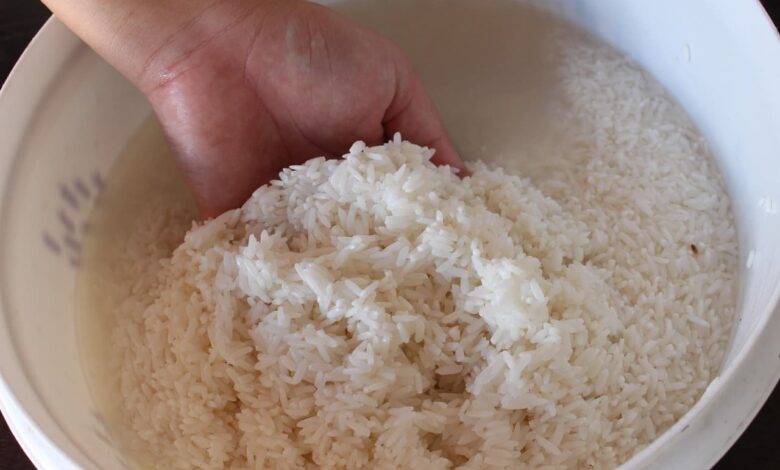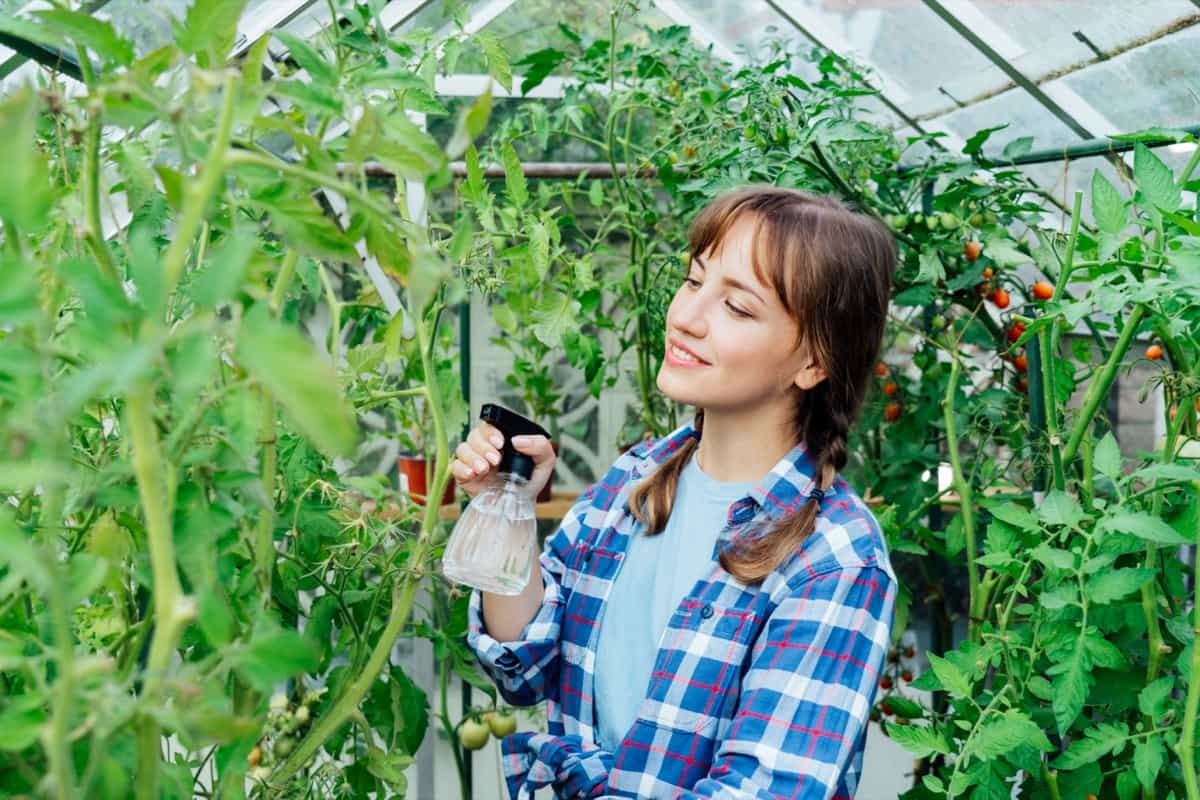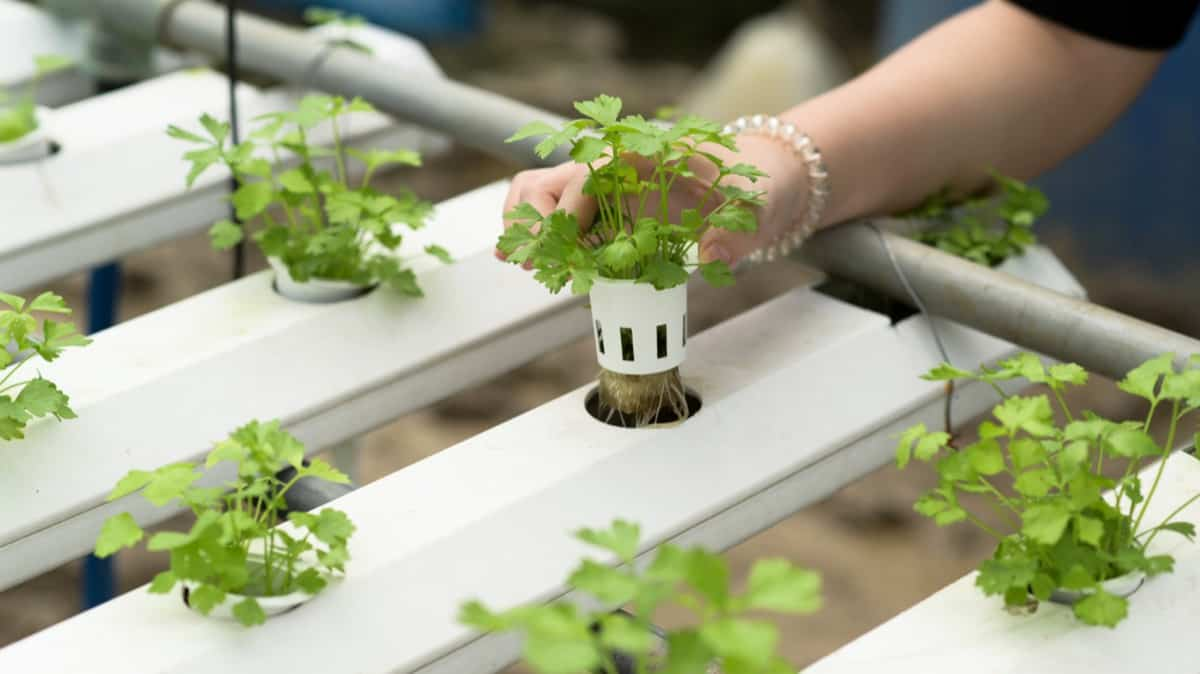How to Make Homemade Fertilizer from Rice Water: 12 DIY Organic Recipes for Houseplants

Hello gardeners, We are back to share valuable information on how to make homemade fertilizer from rice water, including 12 DIY natural and organic recipe applications specifically for houseplants. One eco-friendly way to maintain healthy houseplants is to make a fertilizer out of all-natural ingredients that is rich in nutrients. Turning food scraps into a powerful plant food is possible with homemade rice water fertilizer, which provides a sustainable solution. This blog post provides a detailed explanation of how to create and apply fermented rice water fertilizer. It can be used to boost the health of potted plants, such as peace lilies, orchids, and spider plants. The starch and minerals in rice water can help gardeners promote healthy roots, vibrant flowers, and thick foliage without the need for synthetic pesticides. The guide covers preparation, fermentation, dilution, and application for indoor houseplants in various settings.
Rice water, the thick, starchy liquid that remains after cooking or soaking rice, is rich in essential nutrients, including nitrogen, potassium, and trace minerals, making it an ideal medium for plant growth. This method is both cost-effective and environmentally beneficial because it recycles water from cooking rice or the rinse water that is left over. Succulents, leafy greens, and other plant species, including delicate houseplants and those that bloom indoors, can all benefit from this fertilizer. Anyone, from inexperienced gardeners to seasoned pros, can do the process because of how simple it is: soak, ferment, and dilute. Careful preparation can eliminate common issues like mildew and pests from rice water fertilizer, making it odor-free.
This article is structured into twelve parts, each of which covers a specific aspect of rice water fertilizer. This blog post is a great resource for tropical climate enthusiasts and urban gardeners, covering topics such as fermenting with banana peels or rice bran and adding calcium by combining with eggshell vinegar. If readers follow these guidelines, they will be able to cultivate healthy houseplants while also embracing sustainable practices. Finally, we highlight the benefits and encourage consistent application for long-term plant health and eco-friendly gardening.
12 Easy DIY Organic Fertilizer Recipes Using Rice Water for Healthier Houseplants
Prepare Rice Water Fertilizer from Rinse Water
Create your own rice water fertilizer using the water that is left behind after rinsing white, brown, or jasmine rice. The starch can be extracted from one cup of rice by soaking it in two cups of water for half an hour. After draining, transfer the rice to a clean glass container. This nutrient-rich starchy liquid gently nurtures peace lilies and spider plants, encouraging vigorous foliage without overstressing roots. Because it is simple, inexpensive, and makes use of kitchen scraps, this method is ideal for eco-conscious gardeners who wish to keep vibrant houseplants with no effort.
Use white rice rinse water as a slow-release fertilizer to promote steady development in snake plants and ZZ plants. The starch promotes a healthy root environment by enhancing soil microbial activity. When you use this rinse water, you won’t need any additional additives to achieve beautiful blooms from indoor flowering plants like orchids. Avoid boiling rice water fertilizer if you want to keep as many nutrients as possible in it. Store the liquid in a sealed glass container in the fridge for up to a week before using. The refrigeration will keep it fresh.

This method is a wonderful alternative to chemical fertilizers for indoor herb gardens and balcony container gardening. Carefully dilute the rinse water with an equal amount of distilled water to protect sensitive houseplants from nutrient burn. A versatile fertilizer for indoor ferns and potted citrus trees can be made from the water used to cook sushi rice. If you want to cultivate healthy houseplants without harming the environment, this do-it-yourself method is perfect for you. Just apply it every two weeks, and you’ll see constant development.
| Rice Type | Water Ratio | Soaking Time | Storage Duration |
|---|---|---|---|
| White | 1:2 | 30 min | 1 week |
| Brown | 1:2 | 30 min | 1 week |
| Jasmine | 1:2 | 30 min | 1 week |
| Sushi | 1:2 | 30 min | 1 week |
Ferment Rice Water with Banana Peels
Fermenting rice water with banana peels increases the nutrient content, making it a plant food high in potassium. After soaking the rice in two cups of water for one hour and draining the liquid, add one chopped banana peel to a glass jar. Strong growth is encouraged in succulents and cacti by the potassium in the peel, which improves root production. Cover the jar with a permeable cloth to maintain cleanliness and allow for air circulation. To prevent mold and ensure proper fermentation for nutrient release, keep in a warm, dark place for three to five days while stirring daily.
Fermented rice water with beneficial bacteria is a fantastic source of potassium and carbs, which are essential for the blooming of anthuriums and other houseplants. Indoor herb gardens benefit from the nutrient-rich liquid’s ability to encourage lush plants. Refrigerate the mixture while it ferments to create an odor-free fertilizer. This will reduce bacterial activity and minimize aromas. After the fermentation has finished, remove the peel and store the juice in a sealed glass container for up to two weeks. Dilute with water (1:1) before applying to sensitive houseplants to avoid nutrient surplus, and make sure it’s acceptable for different kinds of plants to use.
This technique is ideal for tropical areas and balcony container gardening due to the fact that potassium promotes plant resilience. When applied to flowering succulents like kalanchoe, this fertilizer promotes healthy roots and an abundance of blossoms. Applying it frequently, perhaps once every 10 to 14 days, increases soil microbial activity, which produces a balanced environment for potted plants. An essential component of eco-friendly urban gardening, a mixture of banana peels and rice water from sushi rice may be made into a long-lasting, nutrient-rich fertilizer that effectively produces indoor plants.
| Components | Quantity | Fermentation Time | Storage Duration |
|---|---|---|---|
| Rice Water | 2 cups | 3-5 days | 2 weeks |
| Banana Peel | 1 (chopped) | 3-5 days | 2 weeks |
Dilute Fermented Rice Water for Safe Application
To avoid harming new seedlings, delicate houseplants, and herbs, dilute fermented rice water fertilizer thoroughly before applying it. Fermentation makes the liquid strong; to dilute the nutrients, mix 1 part rice water with 1 part distilled water. For delicate plants like begonias and African violets, this watered-down treatment prevents root burn and encourages steady development. Using a clean spray bottle or watering can, uniformly distribute the mixture into the soil, paying special attention to the root zone. This will ensure optimum absorption without overwhelming the plant’s system.
For indoor herb gardens or hydroponic systems, it is okay to dilute fermented rice water further (1:2) to grow plants with lower nutrient needs, such as basil or lettuce. Indoor potted citrus trees can also benefit from this method throughout their blossom seasons by receiving a gentle fertilizer. Fertilizer that has been diluted can be refrigerated in an airtight glass container for up to seven days. Incorporate a small piece of activated charcoal into the rice water fertilizer while it is being kept for a more pleasant gardening experience. No scents will be able to escape because of this.
When growing hydroponic lettuce or microgreens, it is important to thoroughly dilute the rice water fertilizer before applying it to cotton pads. This will help avoid nutritional imbalances. Be careful not to use this solution more than once every ten days if you want to promote healthy growth and increase soil microbial activity. For better leaf health through foliar feeding, use the watered-down mixture as a rice water spray on houseplants that flower, such as orchids. This method is ideal for container gardens on balconies because it ensures plants receive balanced nutrients while reducing dangers; it is also the gold standard for sustainable indoor gardening.
| Dilution Ratio | Application Frequency | Storage Duration | Suitable Plants |
|---|---|---|---|
| 1:1 | Every 10 days | 7 days | Begonias, African Violets |
| 1:2 | Every 10 days | 7 days | Basil, Lettuce |
Combine Rice Water with Eggshells for Calcium Boost
To enhance the calcium and starch enrichment of homemade rice water fertilizer, crushed eggshells can be used. After soaking the rice in two cups of water for one hour and draining it, pour the liquid into a glass jar. Use a mortar and pestle to grind the eggshells into a fine powder after they have been cleaned and allowed to dry. If you want to give your houseplants, like orchids or citrus trees in pots, a boost of calcium by making their cell walls stronger, try mixing some powder with some rice water and letting it sit for an entire day.
This fertilizer, which consists of a mixture of rice water and eggshells, prevents the leaves of delicate houseplants, including peace lilies, from becoming brown. Indoor herb beds benefit greatly from the calcium-rich solution, which promotes robust development, especially of mint. Refrigerate the mixture in an airtight glass container to maintain the rice water fertilizer odor-free and prevent spoilage. Remove larger eggshell particles before using watering cans or sprayers to ensure the mixture is evenly distributed. A fertilizer solution devoid of silt will be created in this way.

Succulents that produce flowers, such as kalanchoe, or plants grown in containers on a balcony, benefit from this fertilizer every two weeks to make their blooms more vibrant and their roots stronger. The starch from the residual rice rinse water, when mixed with the calcium from eggshells, makes for a potting mix that is beneficial for soil microbes. If you want to grow microgreens but are worried about overpowering the delicate sprouts, dilute the rice water fertilizer (1:1) first. This method of recycling food scraps makes it an attractive alternative for city gardeners concerned about the environment who wish to nourish their houseplants organically.
| Components | Quantity | Preparation Time | Application Frequency |
|---|---|---|---|
| Rice Water | 2 cups | 1 hour | Every 14 days |
| Eggshell Powder | 1 tsp | 1 day | Every 14 days |
Use Rice Water for Foliar Feeding of Ferns
For effective foliar feeding of prayer plants and house ferns, make a spray of rice water. One cup of rice soaked in two cups of water for 30 minutes is ready to be rinsed. Transfer the excess water to a clean spray bottle. This nutrient-rich starchy liquid can be applied directly to leaves to enhance chlorophyll production and leaf shine. Foliar feeding promotes spectacular foliage in flowering houseplants like peace lilies without putting excessive stress on the roots, making it ideal for delicate species in indoor herb gardens or terrariums.
To protect the nutrients of sensitive houseplants, dilute the rice water fertilizer with an equal amount of distilled water and apply it without boiling. You won’t have to worry about leaf burn because this gives gentle nutrients. Refrigerating the spray in an airtight glass container will keep the rice water fertilizer fresh and odor-free. Ferns thrive in the mildly nutrient-rich rice water used to make sushi, so you can be sure your plants will flourish. Lightly mist the leaves in the morning and allow them to dry before nightfall, using the spray once every ten days.
This method works well for tropical regions and container gardens on balconies since ferns need a steady supply of water and nutrients to thrive. When some of the rinse water from white rice finds its way into the soil, its starch indirectly stimulates soil microbes. Fertilize indoor citrus trees with a combination of soil and foliar spray for optimal health. Urban gardeners now have a sustainable and effortless option for maintaining healthy, vibrant houseplants by utilizing food scraps in an eco-friendly manner.
| Rice Type | Water Ratio | Soaking Time | Application Frequency |
|---|---|---|---|
| White | 1:2 | 30 min | Every 10 days |
| Sushi | 1:2 | 30 min | Every 10 days |
Make Odor-Free Rice Water Fertilizer
A new type of rice water fertilizer that doesn’t produce odor has been developed, making gardening with delicate houseplants and indoor herb gardens much more bearable. To stop the growth of germs, soak 1 cup of rice in 2 cups of water, strain the excess water into a glass jar, and put it in the fridge right away. If you want to make sure the liquid stays odor-free while it’s in storage, add a little piece of activated charcoal. Indoor flowering plants, such as orchids, benefit greatly from this method since it yields a nutrient-rich fertilizer in a clean, non-fermentable form.
Perfect for ZZ and snake plants, the fresh, non-boiled rinse water for rice water fertilizer preserves the maximum starch for soil microbial activity. Ferment the liquid for two or three days in the fridge wrapped with a porous cloth to reduce air exchange and prevent infection. After fermentation, put it in a sealed glass container to maintain its freshness for up to two weeks. To ensure safe nutrition delivery, dilute with water (1:1) before applying to indoor potted citrus trees or flowering succulents like kalanchoe.
If you’re cultivating plants in containers on a balcony or in a tropical climate and need to control the odor, this is the recommended method. Sushi rice, made using a mild rice water solution, is ideal for growing houseplants since it attracts few bugs. Use every 10–14 days to provide consistent feeding and avoid overfertilization. Through the use of refrigeration and charcoal filtering, gardeners may create an environmentally friendly, odorless fertilizer that is effective in growing houseplants. As a result, this fertilizer is a practical choice for city dwellers who are seeking eco-friendly methods of indoor gardening.
| Components | Quantity | Fermentation Time | Storage Duration |
|---|---|---|---|
| Rice Water | 2 cups | 2-3 days | 2 weeks |
| Activated Charcoal | Small piece | – | 2 weeks |
Store Rice Water Fertilizer Long-Term
If stored correctly, homemade rice water fertilizer can benefit an indoor herb garden or flowering houseplant for a long time. To produce rice rinse water, soak one cup of rice in two cups of water. Drain the mixture and store it in an airtight glass jar. Immediately transfer it to the fridge to halt fermentation and prevent spoilage. The nutrients can be preserved in this way for a maximum of two weeks. To make a longer-lasting, odorless fertilizer from rice water, heat it to 160°F for 10 seconds to pasteurize it. Once cooled, transfer it to a clean container.
For fragile houseplants like African violets, it’s better to use unboiled rice water fertilizer. This will keep the nutrients and starch intact, which is ideal for soil microbes. Activated charcoal, even a small bit, can absorb odors while storing and guarantee a clean application. This method ensures that flowering succulents, such as kalanchoe, and indoor citrus trees in pots receive consistent nourishment. The mild nutritional composition of the rice water used to make sushi rice, when kept properly, prevents indoor ferns from going stale.
Fertilize snake plants, ZZ plants, and balcony container gardens with stored fertilizer every two weeks to prevent nutrient burn. Dilute with one-and-one water. Because it makes beneficial use of food waste, this technique is eco-friendly for city gardeners. The fertilizer is pasteurized and stored in airtight glass jars so it lasts for months; the procedure makes it an eco-friendly option for houseplant care that cuts down on waste.
| Treatment | Temperature | Duration | Storage Duration |
|---|---|---|---|
| Refrigeration | – | – | 2 weeks |
| Pasteurization | 160°F | 10 seconds | Months |
Apply Rice Water to Hydroponic Systems
When hydroponic systems are fertilized with rice water, plants like basil and lettuce thrive. Soak one cup of rice in two cups of water. Drain the remaining rice rinse water. Then, strain the mixture through a fine mesh screen to create a clear, sediment-free liquid fertilizer. Use ultraviolet light or boil water for 10 seconds to sterilize the liquid so it can be used in hydroponic systems. When feeding young seedlings or herbs, dilute with purified water (1:2) to prevent nutritional imbalances in sensitive systems.
This rice water fertilizer works best for hydroponically grown strawberries and microgreens if you aerate the mixture while you’re preparing it. Use an aquarium pump to aerate the liquid for 24 hours to increase nutrient breakdown for soil microbial activity in hybrid systems. Fertilizer made from rice water won’t smell foul if stored in a sealed glass container in the fridge. Indoor flowering plants, such as cherry tomatoes, benefit from this chemical-free, dependable nourishment, which should be applied weekly to hydroponic systems to guarantee even distribution of nutrients throughout the reservoir.

This method is a more environmentally friendly alternative to synthetic fertilizers for hydroponic herb gardens or for growing containers on a balcony. By including the rice water from the sushi rice preparation, you may create a mild nutrient profile that is perfect for houseplants and indoor ferns. To avoid preventing plant uptake, it is important to monitor pH levels before adding to systems; the optimum range is 5.5-6.5. Urban gardeners now have an eco-friendly option for growing healthy hydroponic plants—all while reducing food waste—thanks to this method.
| Treatment | Duration | Dilution Ratio | Application Frequency |
|---|---|---|---|
| Sterilization | 10 seconds | – | – |
| Aeration | 24 hours | – | – |
| Application | – | 1:2 | Weekly |
Boost Soil Health with Rice Water and Compost
Fertilize your indoor herb gardens with a nutrient-dense mixture of compost tea and homemade rice water fertilizer to boost soil microbial activity. After soaking the rice in two cups of water for one cup, pour off the excess water and store it in a glass jar. Next, mix it with compost tea made from vermicompost in a ratio of one to one. This mixture of rice water and compost tea is ideal for indoor snake plants, ZZ plants, and potted citrus trees because it supplies nitrogen, starch, and beneficial bacteria, all of which promote robust root systems and lush foliage.
Orchids and other houseplants that produce vibrant blossoms benefit from this mixture’s enhanced soil texture. To get the most out of rice water fertilizer—without boiling it—and to encourage the growth of beneficial microbes, ferment the mixture for two or three days with a breathable cloth cover. Fertilizer made from rice water can be kept odor-free for two weeks if stored in a tightly sealed glass container in the fridge. Before applying to sensitive houseplants, dilute with water (1:1) to guarantee safe and efficient nourishment and to avoid nutrient burn.
Apply every 10 to 14 days to flowering succulents like kalanchoe or container gardens on balconies for the best soil ecology. The delicate rice water solution used to make sushi rice is beneficial for houseplant ferns and makes their leaves healthier. Because it reuses compost and food scraps, this eco-friendly method is ideal for city gardeners seeking long-term solutions. By boosting soil microbial activity, this mixture ensures long-term plant health and offers a realistic approach to growing healthy houseplants with minimal environmental impact.
| Component | Ratio | Fermentation Time | Application Frequency |
|---|---|---|---|
| Rice Water | 1:1 | 2-3 days | Every 10-14 days |
| Compost Tea | 1:1 | 2-3 days | Every 10-14 days |
Revive Yellowing Leaves with Rice Water
Use a DIY fertilizer made of rice water to revive monstera leaves and other fragile houseplants that have turned yellow. Once the rice has soaked in two cups of water, pour out the excess water and place it in a glass jar. Cover with a towel that can be soaked to let it ferment for two or three days. The nutrient- and carbohydrate-rich liquid that drains out of plants revitalizes indoor herb gardens and citrus trees by stimulating more chlorophyll production. Dilute with water (1:1) for a gentle application that won’t harm fragile plants like peace lilies.
If you want your indoor blooming plants, like hibiscus, to take in more nutrients and look their best, try spraying them with rice water for foliar feeding. Store the rice water fertilizer in an airtight glass container in the fridge to maintain its odor-free quality for a period of up to two weeks. Sushi rice water is a mild solution that is ideal for houseplants like kalanchoe and ferns as well as flowering succulents. Applying a little misting to the leaves and paying close attention to the soil once every ten days will effectively restore nutritional deficiencies.
Because frequent fertilizing prevents the plants from becoming yellow, this method is ideal for tropical areas and container gardens on balconies. Soil microbes are encouraged to multiply by the starch in white rice rinse water, which is beneficial for plant health. Urban gardeners now have a sustainable option for reviving houseplants that are struggling to survive: this method uses kitchen waste to rejuvenate them. This method is an eco-friendly and practical approach to keeping indoor plants blooming, as regular use ensures vigorous foliage.
| Treatment | Fermentation Time | Dilution Ratio | Application Frequency |
|---|---|---|---|
| Rice Water | 2-3 days | 1:1 | Every 10 days |
Support Propagation with Rice Water
If you want to keep cuttings in water for plants like pothos or indoor herb gardens, you can create a better rice water fertilizer for propagation stations. Mild nutrition can be made by soaking one cup of rice in two cups of water, then straining the residual rice rinse water into a clean glass jar. Use the water immediately, without letting it ferment, for immediate use. Plants like succulents, cacti, and young seedlings can grow better with this rice water fertilizer, which helps their roots develop without harming delicate cuttings used for growing new plants.
Store the rice water fertilizer in an airtight glass container in the fridge to maintain its odor-free quality for a week. For indoor flowering plants, like orchids, dilute with water (1:2) to make sure it’s safe to apply. Utilize the water used to cook sushi rice for a low-nutrient solution that is perfect for houseplants like ferns and citrus trees in containers. Before placing cuttings in water, soak them for one full day in the diluted solution to encourage root initiation. To maintain a consistent supply of fertilizer, apply to propagation sites weekly.
For delicate houseplants and container gardens on balconies, this method provides a chemical-free way to successfully propagate plants. White rice rinse water contains starch, which boosts soil microbial activity and encourages the development of strong root systems in cuttings when they are potted. This environmentally friendly technology offers urban gardeners a sustainable option to develop their indoor plant collection while ensuring robust growth and minimizing environmental effect. It works by recycling kitchen garbage.
| Rice Type | Water Ratio | Soaking Time | Storage Duration | Application Frequency |
|---|---|---|---|---|
| White | 1:2 | 30 min | 1 week | Weekly |
| Sushi | 1:2 | 30 min | 1 week | Weekly |
Promote Flowering with Fermented Rice Water
Gardenias, hibiscus, and other flowering houseplants can benefit from fertilizing with fermented rice water. Strain the leftover water from the rice by soaking it in two cups of water in a glass jar. Place a permeable cloth over the top and let it ferment for three to five days. The nutrient-rich fermented drink is beneficial to houseplants and flowering succulents like kalanchoe because it supplies starch and trace minerals. Dilute with water (1:1) before applying fertilizer to delicate houseplants to avoid fertilizer burn.

Apply fertilizer to indoor herb gardens and citrus trees in pots every two weeks to promote fruit development and blossoming. Fertilizer made from rice water can be kept odor-free for two weeks if stored in a tightly sealed glass container in the fridge. Using the water from cooking sushi rice is a moderate option that is effective for houseplants like ferns. By stimulating more soil microbes, the starch creates an ideal setting for healthy roots. Foliar feeding with a little spritz of rice water spray can boost chlorophyll and floral vitality.
If you want your tropical plants or container gardens on a balcony to produce many flowers, this recipe is the way to go. This environmentally friendly technique gives city dwellers a sustainable way to grow colorful houseplants by repurposing food scraps. Consistent application encourages robust foliage and plentiful flowers, making it an ideal choice for eco-conscious gardeners who want to nurture healthy houseplants without negatively impacting the environment.
| Treatment | Fermentation Time | Dilution Ratio | Application Frequency |
|---|---|---|---|
| Rice Water | 3-5 days | 1:1 | Every 14 days |
Conclusion
Create your own rice water fertilizer to care for indoor herb gardens, flowering plants, and delicate houseplants in an eco-friendly and budget-friendly manner. For healthy roots, bright blossoms, and verdant foliage, gardeners can recycle the water used to wash or boil rice into nutrient-rich plant food. A wide range of plants, including spider plants, peace lilies, flowering succulents like kalanchoe, snake plants, and ZZ plants, can be supported by methods like fermenting with banana peels, mixing with eggshell vinegar, or using rice water spray for foliar feeding. These methods foster adaptability.
By following the correct preparation steps, such as diluting the rice water fertilizer and storing it in sealed glass containers, you can ensure that it will not smell and will be suitable for indoor potted citrus trees or hydroponic systems. Treating balcony container gardens on a regular basis (every 10–14 days) boosts soil microbial activity, which in turn encourages healthy ecosystems. This waste-reducing technique is ideal for urban gardeners in cramped spaces or tropical regions because it is eco-friendly. Using the water from cooked rice to make sushi is a wonderful way for gardeners to care for houseplants that are both visually appealing and environmentally friendly, in keeping with sustainable principles.
Utilizing rice water fertilizer allows gardeners to cultivate robust houseplants while reducing their reliance on synthetic products. This method successfully revives monstera leaves that have begun to yellow and encourages root development in cacti and succulents. By following the detailed instructions, urban gardeners may nurture healthy houseplants with each application of this homemade natural fertilizer while also supporting a more sustainable and environmentally conscious lifestyle.



